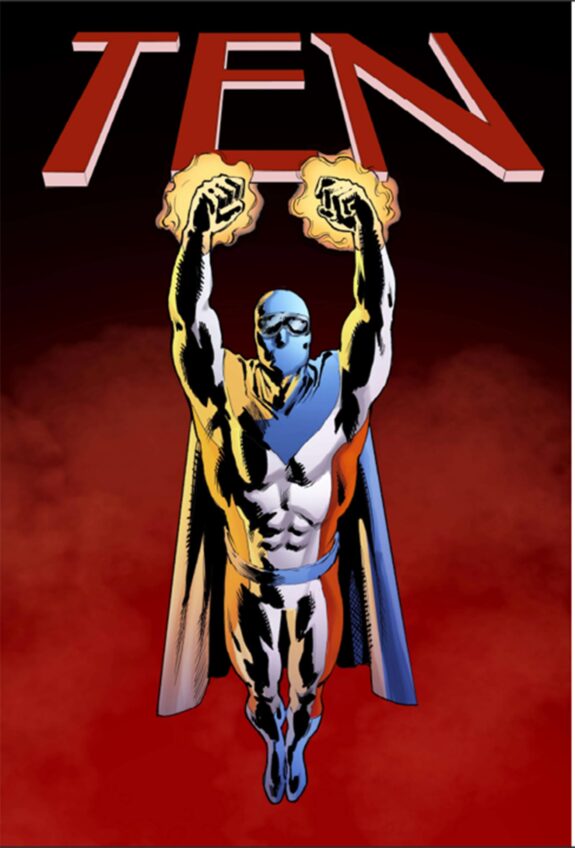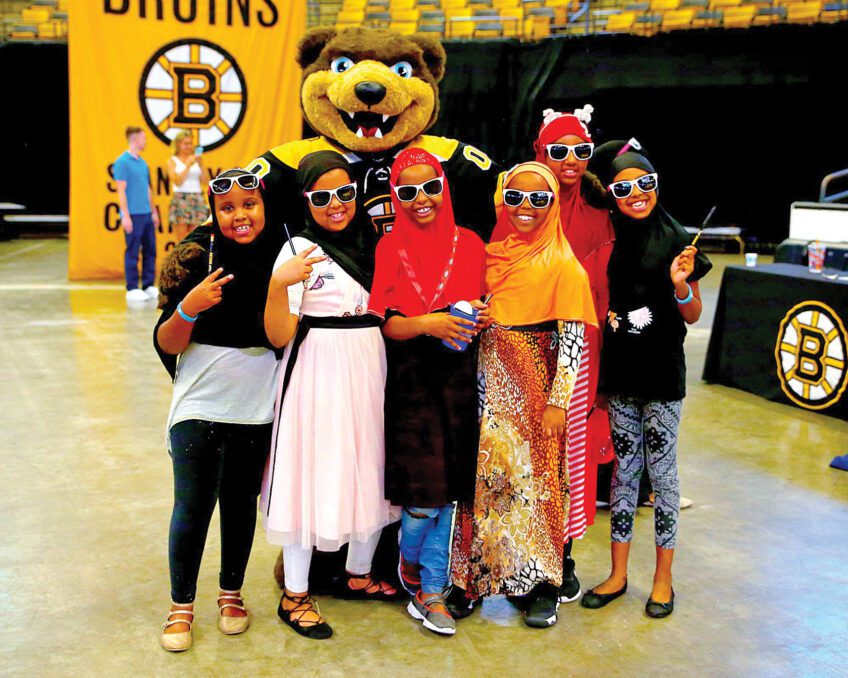
Quilts are a democratic art form that in America have made their way from wealthy Colonial households to the beds of rich and poor alike, and, by the 1970s, onto museum walls.
On view through Jan. 17, 2022 in the Museum of Fine Arts, Boston, “Fabric of a Nation: American Quilt Stories,” follows this journey with 50 quilts spanning 300 years. All but a few are from the museum’s quilt collection, one of the largest in the world.

“To God and Truth” 2019 Bisa Butler. John H. and Ernestine A. Payne Fund, The Heritage Fund for a Diverse Collection, and Arthur Mason Knapp Fund. © Bisa Butler and Claire Oliver Gallery. PHOTO: © MUSEUM OF FINE ARTS, BOSTON
Organized thematically to illuminate both the works and their back stories, the exhibition explores quilts as a window into the many voices, places and eras that make America.
Visitors can continue their exploration with the show’s fine catalogue, written by Pamela Parmal, chair and curator emerita of textile and fashion arts at the MFA, Lauren Whitley, senior curator emerita of textile and fashion arts, and the department’s associate curator, Jennifer Swope.
Turning a household staple into a civic statement, the show begins with a quilt made in 1975 by Irene Williams (1920-2015) of Gees Bend, Alabama, that repeats the word “vote” in kinetic blocks of red, white and blue.

“Pictorial quilt” 1895–98, Harriet Powers. Museum of Fine Arts, Boston. Bequest of Maxim Karolik. PHOTO: © MUSEUM OF FINE ARTS, BOSTON
Using the jewel tones of an African palette and African fabrics such as handwoven kente cloth and Nigerian hand-dyed batiks, Bisa Butler, 48, recasts an 1899 photo of the baseball team of a pioneering African-American college. In Butler’s version, “To God and Truth” (2019), which takes its title from college motto, the figures are life-size and glow with individuality and self-respect.
Quilt covers are often grids that, like graphic novels and cartoons, tell stories or present a series of related images.
In one of the exhibition’s many revealing juxtapositions, Butler’s work shares a gallery with “Scenes of American Life” (about 1920), an array of caricatures that include minstrel show images of Black figures, Irish slapstick characters, and native Americans in headdresses.
The next gallery shows 18th-century quilts owned by New England gentry, made of coveted whole cloth and dyed in blue indigo by their slaves using West African techniques. Nearby is a quilt by Japanese American Tomie Nagano, 71, who coaxes indigo from compost and repurposes old kimonos in her contemporary take on a log-cabin pattern, evoking traditional rural homes in Japan. Also on view is the baptism blanket of Founding Father Samuel Adams.

“Strange Fruit II” 2020, Carolyn Mazloomi. The Heritage Fund for a Diverse Collection and Gallery Instructor 50th Anniversary Fund to Support The Heritage Fund for a Diverse Collection. PHOTO: © MUSEUM OF FINE ARTS, BOSTON
Enchanting quilts show scenes in the daily life of ordinary Americans. One, created in the 1830s by an unknown maker in rural Maine, portrays family members and whimsical children’s book figures. Another, by Boston seamstress Celestine Bacheller (1839-1926), fashions images of a seaside village in Lynn, rendering in lustrous silk memories of her bucolic hometown.
In “Strange Fruit” (2020), a starkly elegant composition in black and white, Carolyn L. Mazloomi, 71, founder of the Women of Color Quilters Network, combines KKK hoods, lynchings and a profile of Billie Holiday. Its title is from the 1937 song by Abel Meeropol, which Holiday sang as the finale to every concert.
Spanning an entire wall are the two extant quilts made by Harriet Powers (1837–1910), a former slave who launched the African American story quilt tradition. Her scenes from Bible stories dance with life.
In “Love Letter 5” (2021), the show’s newest work, Bahamian-Canadian Gio Swaby, 30, honors the resilient joy of Black women with a jaunty, life-size female figure in a fabric wrap.






